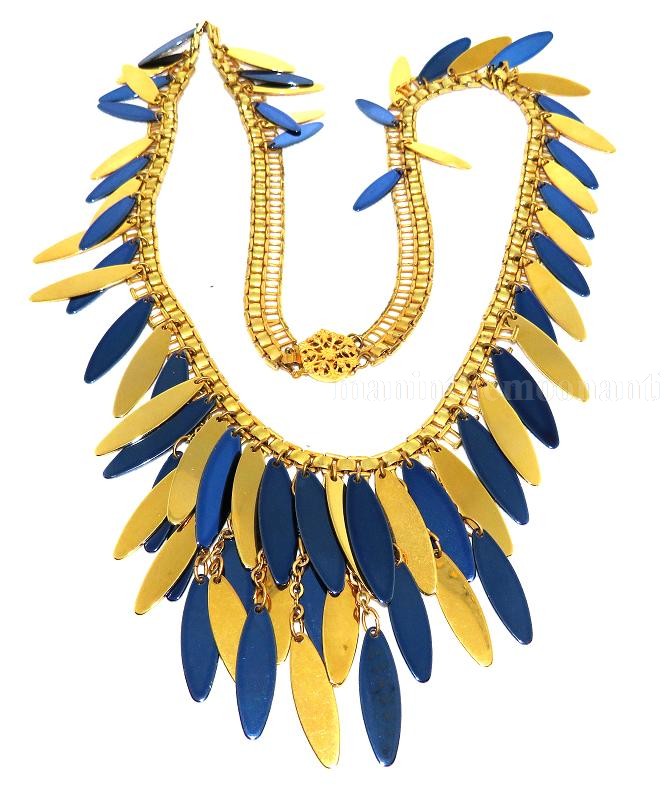Retro Period Jewelry
Click on a selection below
-
Agate - Scottish Agate - Moss Agate - Malachite: Scottish Agate - Agate or Pebble jewelry has long been crafted in Scotland. When Queen Victoria married Prince Albert they purchased Balmoral Castle in Scotland as a vacation home. She was very happy there and wanted to carry her joy home and purchased lots of Scottish Agate jewelry. (Victoria was known to be a lover of jewelry.) British ladies, wanting to emulate her, bought their own Scottish jewelry, setting off a trend for Scottish jewelry even if you had never been there. These pieces are usually set in sterling although they can be found in gold.
-
Bracelets:
-
Coro and Corocraft: DUETTES - Duettes are a pair of clips that attach to a frame with a pin on it. They can be worn has one large pin or two smaller clips. Although many manufacturers made them, Coro is the best-known maker of these and they made a huge number of them.
-
Earrings:
-
Gold:
-
Gold Filled Jewelry:
-
Insects: Insect jewelry could be made from actual insects or just simply feature insect motifs.
Hard insects like beetles could be treated like gemstones and prong set into jewelry. Scarab beetles (Scarabaeidae) are very common colorful beetles and were often used. Bright green metallic wood-boring beetles (Buprestidae) were and still are used for jewelry. Another very large family of beetles with many colorful members is the leaf beetles (Chrysomelidae).
Butterfly wings could be made into jewelry, usually set under glass. The most common butterfly wing to be made into jewelry is that of the Morpho butterfly of South America. These butterfly wings are an iridescent blue even after years because the wings are covered with prisms which continue to split up light even after death. These pieces are often purchased as a souvenir of a trip to Rio and are usually found in silver or silver tone. Thomas L. Mott of England made sterling real butterfly wing jewelry from the Victorian period into the 1920's. This sterling English butterfly wing jewelry exploded in popularity after 1924 when it was exhibited at the British Exposition. This jewelry is an example of the jeweler's creativity in using materials other than gemstones to make beautiful, colorful jewelry.
-
Lucite:
-
Necklaces:
-
Pins - Including Sash Pins: SASH PINS - Sash pins were large heavy pins with thick pin stems from around 1890 through 1915. The fashion at this time was to wear a sash over the shoulder and across the chest (like Queen Victoria); or with the lighter Edwardian fashions, around the waist. These pins were used to secure the sash to the dress and were large and heavy to pin through multiple layers of cloth. They come in many styles and motifs.
-
Rhinestone Jewelry:
-
Sets:
-
Silver and Sterling - Siam Sterling:
-
Snake Jewelry and Ouroboros: Snakes were a popular subject for Victorian jewelry. The Victorians were fascinated by the classical world which was coming to life for them due to many archaeological discoveries during this period. The classical peoples thought snakes were important,so the Victorians did too. Classical people considered snakes to be the ultimate worshiper of the Mother Earth because they laid their entire bodies down upon her. To them, snakes were sacred symbols. The Christian Bible turned the snake into an evil character to overcome this belief and aid in the conversion of pagans to Christianity. To the Christian philosopher, the snake sloughing off his skin represents the transmigration of souls - the soul passes from life to life in the eternal cycle of life and death.
Ouroboros - This is the oldest mystical symbol in the world. It came to the West from Egypt via Greco-Roman culture. "Ouroboros" means "the tail-devourer". It is a snake forming a circle by swallowing his own tail or forming a lemniscate (symbol for infinity).Ouroboros symbolizes Infinity. On a deeper level it symbolizes wholeness in the eternal cycle of life, death and rebirth - the eternal return. In mourning jewelry this would be resurrection and the rebirth of a soul into heaven.On a even deeper philosophical level, as Ouroboros swallows his tail (the past), it seems to disappear but is never really gone. It is only moved onto a internal plane. Out of sight, but not out of mind - never really gone from your heart.

